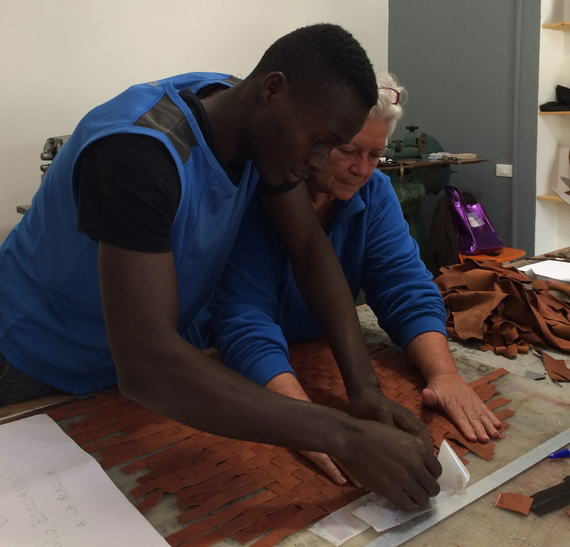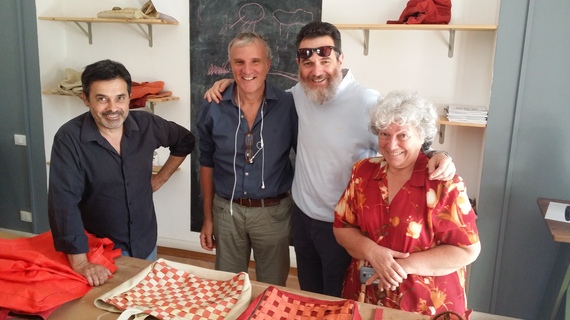
Trainer: "Can you stitch these two pieces together following the lines of a triangle? This will produce a stronger bond."
Apprentice: "Can you tell me what you mean by triangle?"
This is a dialogue between an Italian technician and a migrant from Africa in a training centre to enable migrants to become bag and shoe makers. The centre was created by an Italian social cooperative, Lai-momo, in collaboration with the International Trade Centre's Ethical Fashion Initiative, a development project of the UN. Before arriving in Italy, the migrant worked as an apprentice tailor in his country of origin. He knows how to operate a stitching machine and speaks with his family and friends back at home on his smart phone. Before choosing to migrate, he used to work in the informal sector.
The trainer was surprised, but those who know the reality of informal entrepreneurs in Sub-Saharan Africa are familiar with these kinds of surprises. There are plenty of good artisans there, who have learned their skills informally without any formal education. This is what characterises places that remain stuck in a poverty trap: the capabilities of people are the outcome of a self-development process in which formal education plays a minimal role and practical experience is the main supplier of knowledge. The environment is one in which life and social know-how is distorted by the need to focus first of all on survival, as the basic services of the state are completely absent.
Notwithstanding, Sub-Saharan Africa is where you find some of the most positive and resourceful people on the planet. Why? Because informal artisans have to be innovative every day: they have to invent solutions for the most difficult problems and overcome every form of scarcity. I have seen artisans using a car jack to construct a press, others transforming automotive parts into new metal and tools; and I could give many more examples. The absence of self-development opportunities and of infrastructure offers just the basic level of subsistence to the biggest part of society. These artisans are the very same people who migrate to Europe. They are migrating to find work, yes, but also to develop their capabilities, as this is not possible at home.
Let us return to the training centre. After three weeks and an accelerated course on geometry, that artisan is now making his first bag. The geometry and numeracy lessons continue but they are framed within an ongoing dialogue with trainers and local Lai-momo staff. In this environment (a training centre connected to the industry, where the apprenticeship process is based on learning by doing) it is easier to develop human resources.
Here, we have something connecting migration and development: they are both about people and the first one can supply tools for the second. Migration is the geographical displacement of human resources and this can be an opportunity to access training and learn new skills and a full rounded set of capabilities. This is about people who lack basic capacities and can acquire them when they are placed in a favourable educational environment. If enabled to go back to their countries, these "migrant trainees" could become formidable development agents: they would bring a newly acquired know-how and market connections that are missing.
The question is: can't this be done directly in Africa? In our experience: no. Basically because trainers from outside the continent have a professional background rooted in a working environment where many factors of success (school, health care, communication, transport and so on) are taken for granted: they simply don't understand why a person doesn't know what a triangle is. In addition, trainers are mostly selected by development agencies that are staffed with officers who don't always know the trade or lack proper knowledge of the reality on the ground.
The desire to learn is quasi innate to humans. I have never met anybody with absolutely no curiosity for the world in which we live. Economic migrants are simply people looking for knowledge to access a better life and fulfill their potential as human beings. This human disposition for learning is why migration can be a resource.
